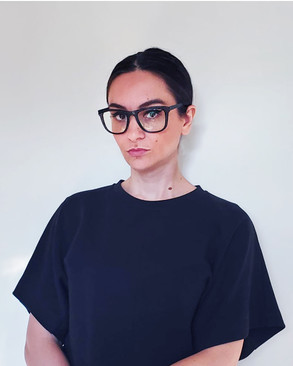
Viola Ago
Lecturer
Viola Ago (b. Lushnjë, Albania) is an architectural designer, educator, and practitioner. Recently, Viola was awarded the Wortham Fellowship at Rice University Architecture (2019-2021), the Yessios Visiting Professorship at the Ohio State University Knowlton School of Architecture (2018-2019) and the Muschenheim Fellowship at the University of Michigan Taubman College of Architecture. In addition, Viola was also awarded a Macdowell Residency (2019), a University Design Research Fellowship from Exhibit Columbus (2017-2019), and a research residency at the Autodesk Technology Center in Boston (2019).
Prior to UCLA, Viola taught at the Rice University School of Architecture, as well as the Harvard University Graduate School of Design, Rhode Island School of Design Architecture, University of Michigan’s Taubman College, and the Southern California Institute of Architecture. She earned her M.Arch degree from the Southern California Institute of Architecture in Los Angeles, and a B.ArchSc from Ryerson University in Toronto. Prior to teaching, Viola was a lead designer in the Advanced Technology Team at Morphosis Architects working on international built and competition projects.
Viola’s written work has been published in Log, Wiley’s AD Architectural Design Magazine, Routledge’s Instabilities and Potentialities Book, Sci-Arc’s Offramp, Acadia Conference Proceedings, TxA Emerging Design and Technology Journal, JAE Journal, Architect’s Newspaper, Archinect, among others. She has multiple forthcoming publications by Wiley, AR+D and Routledge. Her work has been exhibited in Los Angeles, Boston, Houston, Ghent NY, San Francisco, Miami, Columbus, Ann Arbor, and Cincinnati.
Viola’s design research practice, MIRACLES Architecture, focuses on architecture’s role in a world inhabited with forms of duress. Her interests in the affective conditions of war and conflict ridden territories has fueled her investigations towards a design research project that looks at the aesthetic and formal agency of destruction and disorder through methods of perceptual mechanisms. Her architectural project broadly speaking looks to political theory and the method of phenomenology of empathy, and digital technological advancements such as real-time physics engines and production methodologies.
Related Links |
|